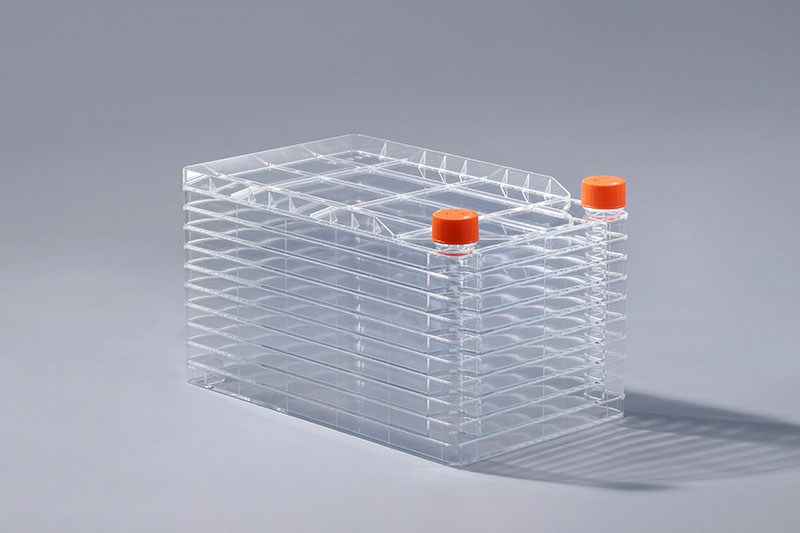1. Bacteria: Mae halogiad bacteriol yn aml yn cynnwys Escherichia coli, Staphylococcus, ac ati. Mae'n hawdd dod o hyd i'r math hwn o halogiad. Mae'n dywod du a mân o dan ficrosgop gwrthdro cyffredin. Mae'r ateb diwylliant yn gyffredinol yn troi'n felyn mewn amser byr. Nid yw'r hylif yn gymysg, bydd ychydig o ysgwyd yn achosi llawer o gymylogrwydd arnofio.chwarae rhan bwysig mewn meithriniad celloedd ar raddfa fawr megis paratoi brechlynnau a fectorau lentifeirws. Wrth feithrin celloedd, mae gwahanol fathau o lygredd yn drafferthus iawn. Ymhlith y ffynonellau llygredd, mae llygredd microbaidd yn fath cymharol gyffredin o lygredd. .
2. Yr Wyddgrug: Mae'r rhan fwyaf o'r halogiad llwydni yn Candida albicans, Aspergillus, burum ac yn y blaen. Ar ôl halogi llwydni, arhosodd y cyfrwng diwylliant yn glir ac yn gymylog mewn cyfnod byr o amser. O dan ficrosgop gwrthdro, gellid gweld hyffae ffilamentaidd a dendritig cydblethedig rhwng celloedd yn arnofio yn y cyfrwng meithrin.
3. Mycoplasma: Mae maint Mycoplasma rhwng bacteria a firysau, ac mae'n ficro-organeb sy'n byw'n annibynnol. Sensitif i wres, nid i wrthfiotigau cyffredinol. Mae siâp mycoplasma yn gyfnewidiol, ac mae'n cael ei arsugno'n bennaf ar wyneb y gell a rhwng celloedd. Wedi'i arsylwi o dan y microsgop electron, mae gronynnau trwchus dwysedd uchel yn y canol, ac mae'r croestoriad yn debyg i'r microvilli cell.
4. Mwydod du: Mae smotiau du bach yn ymddangos yn y celloedd ar ôl cael eu halogi gan fwydod glud du, a gellir gweld symudiadau afreolaidd o dan ficrosgop pŵer uchel. Nid oedd cymylogrwydd y cyfrwng diwylliant yn amlwg, ac ni chafodd fawr o effaith ar gyflwr twf y celloedd.
Mae'r uchod yn halogiadau microbaidd cyffredin wrth feithrin celloedd mewn ffatrïoedd celloedd. Maent yn cael effeithiau gwahanol ar dwf celloedd. Mae rheoli'r halogiadau hyn yn fesur allweddol i sicrhau twf celloedd da.
4. Black worms: Small black spots appear in the cells after being contaminated by black glue worms, and irregular movements can be seen under a high-power microscope. The turbidity of the culture medium was not obvious, and it had little effect on the growth state of the cells.
The above are common microbial contaminations when culturing cells in cell factories. They have different effects on cell growth. Controlling these contaminations is a key measure to ensure good cell growth.
The FAI climbed 5.9 percent year-on-year in the first 11 months of 2018, quickening from the 5.7-percent growth in Jan-Oct, the National Bureau of Statistics (NBS) said Friday in an online statement.
The key indicator of investment, dubbed a major growth driver, hit the bottom in August and has since started to rebound steadily.
In the face of emerging economic challenges home and abroad, China has stepped up efforts to stabilize investment, in particular rolling out measures to motivate private investors and channel funds into infrastructure.
Friday's data showed private investment, accounting for more than 60 percent of the total FAI, expanded by a brisk 8.7 percent.
NBS spokesperson Mao Shengyong said funds into weak economic links registered rapid increases as investment in environmental protection and agriculture jumped 42 percent and 12.5 percent respectively, much faster than the average.
In breakdown, investment in high-tech and equipment manufacturing remained vigorous with 16.1-percent and 11.6-percent increases respectively in the first 11 months. Infrastructure investment gained 3.7 percent, staying flat. Investment in property development rose 9.7 percent, also unchanged.
 English
English



















































